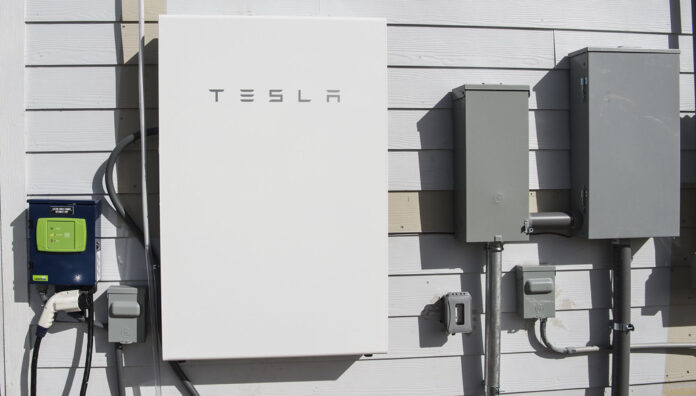How Solar Battery Storage Works
Introduction
Solar energy has emerged as a powerful and sustainable alternative to conventional sources of electricity. One of the key advancements in solar technology is the integration of solar battery storage systems. This innovative approach allows individuals and businesses to harness, store, and utilize solar energy efficiently. In this article, we will delve into the intricate workings of solar battery storage and how it revolutionizes the way we consume energy.
Understanding Solar Battery Storage
The Basics of Solar Panels
Solar panels are composed of photovoltaic cells that capture sunlight and convert it into direct current (DC) electricity. These panels are installed on rooftops or open spaces where they can receive maximum sunlight exposure.
Converting Sunlight into Electricity
The photovoltaic cells within the solar panels facilitate the photovoltaic effect, which involves the absorption of photons from sunlight. This process generates a flow of electrons, creating an electric current.
Storing Energy in Batteries
Once the electricity is generated, it needs to be stored for later use. This is where solar batteries come into play. They store the excess energy produced during peak sunlight hours, ensuring a consistent power supply even when the sun isn’t shining.
Types of Solar Batteries
Lead-Acid Batteries
Lead-acid batteries have been a staple in energy storage for decades. They are reliable and cost-effective, making them a popular choice for residential solar installations.
Lithium-Ion Batteries
Lithium-ion batteries have gained prominence in recent years due to their high energy density and longer lifespan. They are commonly used in electric vehicles and are now making their mark in solar energy storage.
Flow Batteries
Flow batteries store energy in liquid electrolytes, allowing for scalability and extended storage capacities. While they are relatively new in the market, their potential for large-scale applications is promising.
The Role of Charge Controllers
Charge controllers regulate the charging and discharging of batteries, safeguarding them from overcharging or over-discharging. They play a crucial role in prolonging the lifespan of solar batteries.
Inverters: Transforming DC to AC
Inverters convert the direct current (DC) stored in batteries into alternating current (AC), which is used to power household appliances and the electrical grid.
Managing Energy Flow: Grid-Tied vs. Off-Grid Systems
Grid-Tied Systems
Grid-tied systems are connected to the main electrical grid. They allow excess energy to be fed back into the grid, often earning credits or compensation from utility companies.
Off-Grid Systems
Off-grid systems operate independently of the main grid. They rely solely on solar energy and battery storage, making them ideal for remote or isolated locations.
Maximizing Efficiency with Smart Energy Management
Smart energy management systems optimize the use of stored energy by intelligently distributing it based on real-time demand and usage patterns.
Benefits of Solar Battery Storage
Reducing Electricity Bills
By utilizing stored solar energy during peak hours, homeowners can significantly reduce their reliance on the grid, leading to substantial savings on electricity bills.
Emergency Power Backup
Solar battery storage provides a reliable source of power during outages, ensuring that essential appliances and devices remain operational.
Environmental Benefits
Reducing dependency on fossil fuels for electricity generation leads to a decrease in carbon emissions, contributing to a greener and more sustainable planet.
Factors to Consider Before Installing Solar Battery Storage
Solar Panel Capacity
The capacity of your solar panels should align with your energy consumption needs to ensure optimal performance.
Battery Capacity
Choosing the right battery capacity is crucial for storing enough energy to meet your requirements, especially during periods of low sunlight.
Location and Climate
Consider the climate and geographic location when planning your solar battery storage system. Some regions receive more sunlight, making them more conducive for solar installations.
Installation Process
A certified solar installer will assess your property, design a customized system, and handle the installation process, ensuring safety and efficiency.
Maintenance and Longevity
Regular maintenance, including checking battery health and cleaning panels, is essential for prolonging the lifespan and efficiency of your solar battery storage system.
Government Incentives and Rebates
Numerous government programs offer incentives and rebates for adopting solar energy systems, making it an attractive investment for homeowners and businesses.
Future Trends in Solar Battery Technology
Ongoing research and development in solar battery technology are focused on enhancing efficiency, storage capacity, and reducing costs, promising an even brighter future for solar energy.
Case Studies: Real-Life Applications
Real-world examples showcase the effectiveness and benefits of solar battery storage in various settings, from residential homes to industrial complexes.
Frequently Asked Questions (FAQs)
- How long do solar batteries typically last? Solar batteries can last anywhere from 5 to 15 years, depending on factors like battery type, usage, and maintenance.
- Can I install a solar battery myself? It is recommended to hire a professional installer to ensure the system is set up correctly and safely.
- What happens on cloudy days with limited sunlight? Solar panels can still generate electricity on cloudy days, although at a reduced capacity.
- Do solar batteries require regular maintenance? Yes, regular maintenance is essential to ensure optimal performance and longevity of solar batteries.
- Are there government incentives for installing solar battery storage? Yes, many governments offer incentives, tax credits, and rebates to encourage the adoption of solar energy systems.
